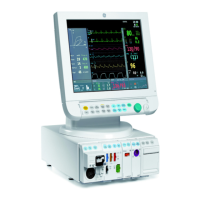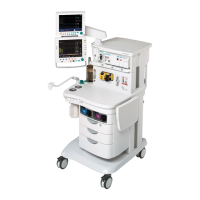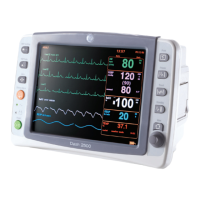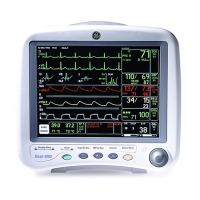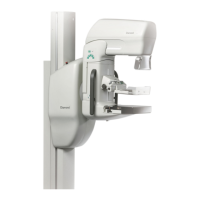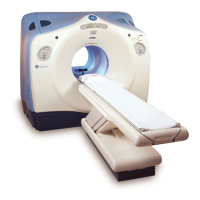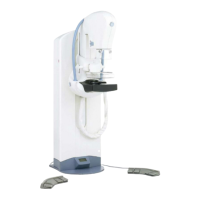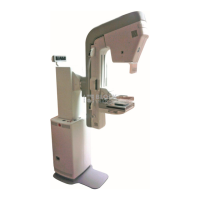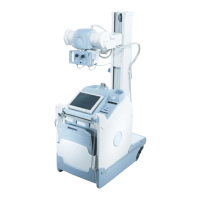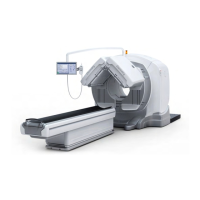19
Document no. M1144953-001
Check that the Mod Mon Time-outs, Mon Mod Bad checksums, Mod Mon Bad Checksums
and Bad Checksums from BIS values in the module view are not increasing faster than by
5 per second.
Check that the memories of the module have passed the internal memory test, i.e. RAM,
ROM and EEPROM all state OK.
2. Check the
BIS and Sensor Check membrane keys of the module. Stay in the module
view and press each key for at least one second and check that the key being pressed is
identified, i.e. the corresponding 'PUSHED' text appears in the service menu.
3. Check that ‘Messages from BE’ are increasing steadily.
Enter the Sensor menu.
Check that
- sensor type indicates 'No Sensor' (i.e. no sensor is identified)
- no sensor is identified
- mains frequency is set correctly
- check that ‘BE powerup test’, ‘DSC selftest Ch1’ and ‘DSC selftest Ch2’ all show 'PASSED'
(if not, go to BIS Setup menu, perform DSC Test and check the results again)
4. Connect the BIS simulator to the PIC+ cable. See that ‘Checking sensor’ text and image
appear in the waveform numeric field. Wait for a while and check that all sensors show
'PASS'. Check that the ‘Sensor type’ shows correct information.
5. Check that the ‘BIS’, ‘SQI’ and ‘SR’ values are between 0...1000, and the ‘EMG’ value
between 0...10000.
NOTE: If Sensor Simulator 900508 is used, the values can be out of the given range.
6. Enter the Module menu.
Check that no BIS engine errors appear.
Perform sensor check by pressing
Check Sensor and see that the check is passed.
During the sensor check the Impedance meas. should show 'CYCLIC'. During operation
the Impedance meas. should show 'COMBINED' or 'OFF' (depending on the user setting in
BIS Setup menu).
"
2.2.12 Entropy Module, E-ENTROPY/ M-ENTROPY
1. Enter the Entropy service menu.
Check that the Entropy sensor cable is connected to the module.
Check that the Time-outs, Bad checksums and Bad c-s by mod values in the module view
are not increasing faster than by 5 per second. Check that the memories of the module
have passed the internal memory test, i.e. RAM, ROM and EEPROM all state OK.
2. Check the
Entropy and Check Sensor membrane keys of the module. Stay in the
module view and press each key for at least one second and check that the key being
pressed is identified, i.e. the Check Sensor text is highlighted in the service menu and that
pressing the
Entropy key brings up the Entropy menu.
3. Connect the Entropy simulator (N-ES) to the cable. See that the ‘Checking sensor’ text and
image appear in the waveform numeric field. Wait for a while and check that all sensors
show “PASS”.
4. Check that the EntrEEG waveform and RE and SE values appear on the monitor screen.
"
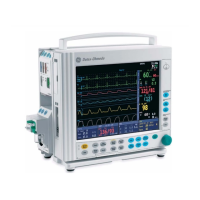
